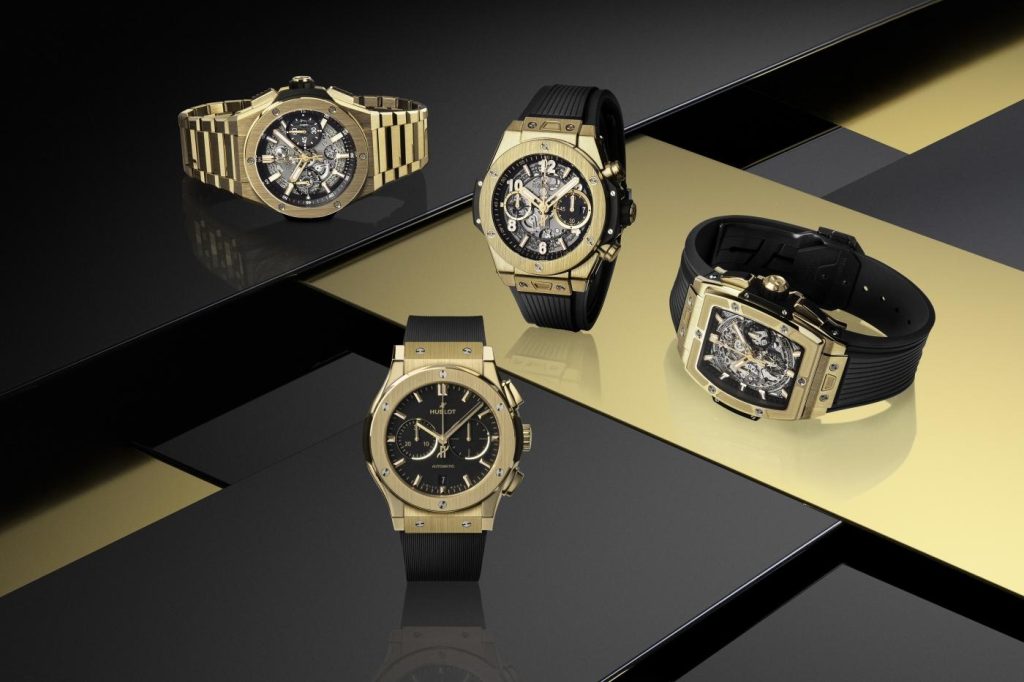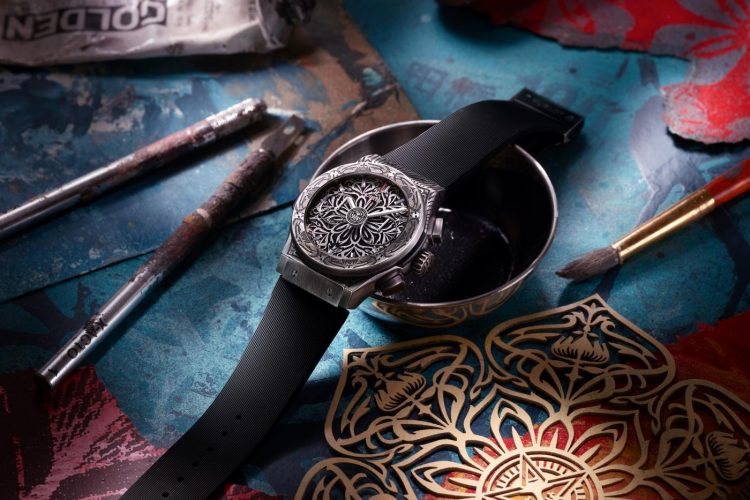Introduction
Hublot, a Swiss luxury watch brand, has become synonymous with innovation, technological advancement, and cutting-edge materials. Since its inception in 1980, Hublot has challenged the conventions of traditional watchmaking, pushing the boundaries of design and functionality. Its unique philosophy of “The Art of Fusion” has led to groundbreaking developments in materials and mechanics, ensuring that each Hublot timepiece is not just a watch, but a piece of modern art.
This article will delve deep into the technologies and craftsmanship behind Hublot watches, focusing on the materials, movements, and innovative techniques that define the brand’s iconic timepieces. From the Big Bang series to the innovative Spirit of Big Bang, we will examine the intricate technological processes that set Hublot apart from its competitors.
1. Hublot’s Design Philosophy: The Art of Fusion
1.1 The Fusion of Materials
One of the most defining features of Hublot’s design philosophy is the concept of “The Art of Fusion.” The brand believes that by combining diverse materials, it can create watches that are both functional and aesthetically groundbreaking. Hublot is not afraid to blend unconventional materials with classic elements, resulting in bold and innovative designs that have become a hallmark of the brand.
Hublot’s bold fusion of materials has seen the integration of rubber, ceramic, titanium, gold, carbon fiber, and sapphire into watchmaking, creating watches that are both lightweight and durable, while maintaining the luxury watch aesthetics.
1.2 Signature Materials Used by Hublot
- Rubber: Introduced by Hublot in its early collections, rubber was a game-changing material that was never before used in high-end watchmaking. The brand’s rubber straps have become iconic, combining comfort and sportiness without sacrificing elegance.
- Magic Gold: This 18-karat gold alloy is unique to Hublot. It is scratch-resistant, making it one of the toughest gold alloys in the world.
- Ceramic: Hublot’s use of ceramic in their Big Bang collection is one of the brand’s most celebrated innovations. It offers excellent resistance to scratches and discoloration, making the watch highly durable.
- Sapphire Crystal: Hublot has been known to use sapphire crystal not only for the watch face but also for entire cases, providing exceptional durability and a high-tech, transparent look.
- Carbon Fiber: The use of carbon fiber in Hublot watches provides extreme durability and lightweight properties, making it ideal for the Big Bang collection.
2. The Evolution of Hublot Movements: Precision Meets Innovation
Hublot’s dedication to quality is reflected in its in-house movements. These self-developed calibers are designed to provide precision, reliability, and innovation, which is an essential part of the Hublot experience.
2.1 The HUB Series: In-House Movements
Hublot has developed a range of in-house movements under the HUB designation. These movements are the heart of many Hublot timepieces, and the brand takes great pride in creating calibers that blend technological advancement with Swiss watchmaking tradition.
- HUB 1242: This movement is at the heart of the Big Bang Unico collection. It is a chronograph with a flyback function and features a dual-barrel mechanism for increased power reserve and a 60-hour power reserve.
- HUB 4100: This is a more traditional automatic chronograph movement used in several Hublot models. It includes a date complication and boasts an excellent power reserve.
2.2 Unico Movement: Revolutionizing Watchmaking
One of the most groundbreaking innovations in Hublot’s catalog is the Unico movement. Introduced in 2009, the HUB 1242 Unico movement is a self-winding chronograph with an integrated column wheel. It was one of the first in-house chronograph movements developed entirely by Hublot.
- Modular Design: Unlike traditional chronograph movements, which are often modular (comprising several parts from different manufacturers), the Unico movement is fully integrated. This allows for better reliability, a more efficient power reserve, and a higher level of precision.
- Flyback Functionality: The flyback feature allows the chronograph to be reset and restarted with a single push of the button, offering unparalleled convenience for those who need to measure time repeatedly in quick succession.

3. Hublot’s Innovative Use of Materials and Techniques
3.1 The Big Bang Collection: A Case Study in Innovation
The Big Bang collection is perhaps the most famous and widely recognized of all Hublot’s lines. Launched in 2005, it marked a turning point for the brand, establishing Hublot as a leader in high-tech materials and distinctive design.
- Ceramic Cases: Hublot’s use of ceramic in the Big Bang series was a game-changer. Ceramic is an extremely hard material that is resistant to scratches, making it ideal for the high-end watch market. Hublot combines ceramic with other materials, such as titanium or gold, to create watches that are not only durable but also visually striking.
- Sapphire Crystal Cases: Hublot was one of the first watch brands to offer entire cases made from sapphire crystal. These transparent cases offer a unique, futuristic look while enhancing the watch’s durability and scratch resistance.
- Hublot’s 3D Carbon: In 2011, Hublot introduced 3D Carbon as part of its Big Bang collection. This material is not only incredibly lightweight but also highly resistant to wear and tear. Its texture and patterns give the watch a striking, industrial aesthetic.
3.2 Titanium: The Lightness of Being
Another material frequently used by Hublot is titanium. Known for its lightweight properties and strength, titanium provides a perfect balance between elegance and durability.
- Benefits of Titanium: Hublot’s use of titanium allows for more comfortable wear, especially in larger timepieces. Its resistance to corrosion and its hypoallergenic properties make it suitable for those with sensitive skin.
- Titanium and Carbon Fiber: Hublot has combined titanium and carbon fiber in several models to achieve an ultra-lightweight and extremely durable timepiece. These materials allow for a distinctive design while ensuring that the watch can withstand daily wear.
4. Hublot and the Future of Watchmaking: Looking Ahead
4.1 Hublot’s Collaborations with Other Industries
Hublot is not just about watchmaking. The brand has embraced collaborations with other industries, especially in the sports and luxury sectors. These collaborations are an essential part of Hublot’s identity, and they showcase the brand’s commitment to pushing boundaries and experimenting with new ideas.
- FIFA World Cup: Hublot has been the official timekeeper for the FIFA World Cup since 2006. This partnership has allowed the brand to showcase its innovative chronographs and timekeeping systems in front of a global audience.
- Formula 1: The brand’s collaboration with Formula 1 has led to the creation of timepieces that embody speed, precision, and technology, much like the sport itself. Watches like the Big Bang Ferrari are a direct reflection of the technical prowess required in motorsport.
- Art and Culture: Hublot has also partnered with renowned artists, such as Jean-Claude Biver, to create limited edition pieces that blur the line between watchmaking and art. These pieces showcase the brand’s dedication to not only functionality but also creativity.
4.2 The Impact of Smartwatch Technology
In recent years, smartwatches have become a significant part of the wearable tech landscape. Hublot, however, has not shied away from integrating technology into its traditional timepieces. In 2018, Hublot released the Big Bang e, its first connected smartwatch, which combined classic watchmaking with modern technology.
- Integration with Wearables: The Big Bang e allowed users to enjoy the best of both worlds—traditional Swiss watchmaking coupled with advanced tech features such as GPS, fitness tracking, and notifications.
- The Future of Smart Luxury Watches: Hublot’s foray into the smartwatch market suggests that the brand is committed to embracing innovation while preserving the heritage of traditional watchmaking.
5. Hublot Watches: A Commitment to Craftsmanship and Quality
At the heart of every Hublot watch is a commitment to Swiss craftsmanship and attention to detail. Each timepiece undergoes rigorous testing and quality control processes to ensure that it meets the highest standards of excellence.
5.1 Testing and Quality Control
Hublot’s watches undergo a series of tests before they are released to the public:
- Water Resistance: Hublot’s watches are tested for water resistance to ensure they perform well in real-world conditions, including diving and exposure to harsh environments.
- Shock Resistance: The brand’s timepieces are tested for shock resistance to ensure they can withstand accidental drops or impacts.
- Power Reserve Testing: Each movement is tested for accuracy and power reserve efficiency, ensuring it delivers reliable timekeeping.
Conclusion
Hublot’s commitment to innovation, technological advancement, and luxury craftsmanship has made it a pioneering force in the world of haute horology. With its bold use of materials, in-house movements, and collaborations with leading industries, Hublot has proven that it is not just a watchmaker but a visionary that continuously redefines the future of watchmaking.
Whether you’re a collector, enthusiast, or a newcomer to the world of luxury watches, Hublot’s timepieces offer a combination of aesthetics, function, and cutting-edge technology that is unmatched in the industry.





































